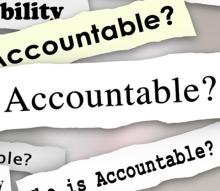This post was written by guest blogger Pat Sokolove, PhD, Deputy Director, OITE; AAAS Policy Fellow, 2003 – 2005; Health, Education, & Human Services Selection Panel Member, 2006; Chair, 2008 – 2009.
The online application system for AAAS Science & Technology Policy Fellowships is now open; the deadline is 5:00 pm (EST), December 5, 2013. The AAAS materials are exceptionally clear, but potential applicants always have questions. Here are some of the questions I hear most often.
Am I a good candidate? AAAS selection panels adhere carefully to the published evaluation criteria. That means that your science counts most (40 points)! You need to demonstrate a credible publication record for a scientist at your career stage. As a postdoc you don’t need ten Science papers, but you will need at least a handful of peer-reviewed publications. Good science is not enough, however. You will also be judged on your leadership, your problem-solving abilities, your communication skills, and your commitment to/interest in policy (15 points each for a total of 60). Your CV or letters must provide convincing evidence that you have it all.
I am interested in applying to this program in the future. What can I do to make myself a good candidate? In addition to ensuring that your science is top-notch, take the time to immerse yourself in policy. Read all the articles that include a science policy component in a good newspaper. Read broadly. Don’t restrict yourself to the areas with which you are already familiar. You should be just as conversant with the importance of maternal-child health in developing countries as with climate change or the toxic effects of gold mining in rural Nigeria. Find an opportunity to take an active policy role: volunteer with an advocacy group, write and submit opinion pieces, contribute to exhibit development at a museum or to a free clinic in a neighborhood near you, participate in the NIH Science Policy Journal Club, or sign up for a diversity course. This will demonstrate your interest in science policy, and develope your leadership and communication skills.
What is the interview like? The 30 minute interviews for a particular fellowship area are scheduled back-to-back on two sequential days, and selections are made at the end of the second day. Except for the Congressional Fellowships, there is no limit to the number of finalists the committees can select. The aim is bring in candidates that best meet the goals of the program.
At the beginning of the interview, the applicant presents a briefing memo he/she prepared in advance (5 minutes) and answers questions on the memo’s contents (5 minutes). The six to ten panelists then ask policy-related questions for the remaining 20 minutes. They are looking for evidence of outstanding communication skills, a wide-ranging interest in policy issues, and a realistic understanding of the constraints under which policy makers operate, both fiscal and temporal. A typical question might be, “It’s a rainy night and you find yourself in a cab with the President’s science advisor. What would you talk about if you had only 5 minutes?”
If the point of the fellowships is to bring good science to government, why does the NIH participate in this program? PhD scientists are a dime a dozen at NIH. In fact, the aim of the program is two-fold: providing scientific input to inform policy decisions and exposing the fellows to how policy works. Fellows in the Congressional or Diplomacy areas may well be the scientist in their offices. They are responsible for bringing the policy makers up to speed on whatever scientific issue arises, be it stem-cell transplants or wind energy, while at the same time engaging directly in policy making. In contrast, the policy component will dominate the fellowship experience at the NIH or NSF. The AAAS Fellowship Program provides a pool of “vetted” individuals with an interest in policy. NIH offices tend to use their fellows to do policy work while evaluating them for more permanent employment.
The best way to increase your chances of successfully applying for a Science and Technology Fellowship through AAAS is to make sure you read and follow the application instructions. All the instructions, selection criteria and FAQs can be found at http://fellowships.aaas.org/ We strongly encourage those interested in applying to read all the information on this page and tailor your application accordingly.




